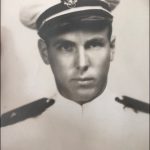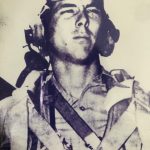History
The Lloyd Center’s 82-acres of estuary and maritime forest in South Dartmouth was donated to the Dartmouth Natural Resources Trust (DNRT) in 1978 by Karen Lloyd as a living memorial to her mother, Katharine Nordell Lloyd. Originally a residence, our main building is a four-story modern structure which overlooks Buzzards Bay and the Slocums River estuary. Because of its unparalleled beauty, the Massachusetts Executive Office of Environmental Affairs has identified the Lloyd Center’s property as one of the state’s 15 “Special Places.”
 In 1980, the Lloyd Center first established its mission of environmental education and research, developed articles of operation, and hired a full-time Executive Director, Alan L. Hankin, Ph.D. The Lloyd Center was officially opened to the public in 1981 when it began offering its popular natural science programs and workshops to students, teachers and the community. In 1984, Sandra Ryack-Bell was hired as the School Programs Coordinator, the first full-time education position. By 1985, the Lloyd Center had received tax-exempt status as an independent entity. The Intern program began as well. In 1986, Mark Mello was hired as the first Lloyd Center Research Coordinator, and Bill Chamberlin was hired as the first Outreach Coordinator. Amy Dyer was also hired as full-time education senior instructor. That same year, the building which contains our research collections and wheelchair-accessible classrooms was donated and moved onto the Lloyd Center’s property. In 1987, the two education positions were combined into an Education Director position - Amy Dyer succeeded Sandra Ryack-Bell in this position.
In 1980, the Lloyd Center first established its mission of environmental education and research, developed articles of operation, and hired a full-time Executive Director, Alan L. Hankin, Ph.D. The Lloyd Center was officially opened to the public in 1981 when it began offering its popular natural science programs and workshops to students, teachers and the community. In 1984, Sandra Ryack-Bell was hired as the School Programs Coordinator, the first full-time education position. By 1985, the Lloyd Center had received tax-exempt status as an independent entity. The Intern program began as well. In 1986, Mark Mello was hired as the first Lloyd Center Research Coordinator, and Bill Chamberlin was hired as the first Outreach Coordinator. Amy Dyer was also hired as full-time education senior instructor. That same year, the building which contains our research collections and wheelchair-accessible classrooms was donated and moved onto the Lloyd Center’s property. In 1987, the two education positions were combined into an Education Director position - Amy Dyer succeeded Sandra Ryack-Bell in this position.
In 1999, following the recommendations of its Vision Committee, the Board committed to a new growth strategy, recruited a new Executive Director and created two new positions – Directors of Education and Research. The Lloyd Center has evolved over the years into a regional hub for environmental research and innovative natural science education. Each year we’ve broadened our outreach, strengthened our collaborations, gained members, attracted more visitors to our exhibits and grounds, and increased the number of students involved in our programs; more than 15,000 students and adults participated in Lloyd Center programs during 2002. The Center has also formed or participated in a number of joint ventures and collaborations focused on environmental education for inner city and disadvantaged youth. We also are leading a unique partnership project of research and education focused on the restoration of Dartmouth’s nitrogen-clogged waterways. Today, the Lloyd Center’s initiatives are aggressively deepening and expanding in keeping with both our mission and strategic vision for environmental research and education.
Demarest Lloyd, Jr.
Demarest Lloyd died, killed in action, June 12, 1944 at Saipan. He was born the son of Demarest Lloyd, and Katherine (Nordell) Lloyd on July 10, 1919 in Marblehead, Massachusetts and prepared at St. Paul's School, Concord, New Hampshire before coming to Harvard.
At college Lloyd lived in Eliot House, was a member of the hockey team, active in House football, baseball and squash and was a member of the Hasty Pudding-Institute of 1770, A.D. Club and Varsity Club.
He earned his S.B. in 1942. After college he enlisted in the Naval Air Corps, was commissioned as an ensign in March, 1943, went overseas and was based on the carrier Enterprise.
He married Nancy Campbell Tenney, and they had a child, Tangley.
A lieutenant (j.g.), he was a naval pursuit pilot attached to Fighter Squadron Two when he was killed in action at Saipan. He was survived by his wife and daughter.
(From the Harvard Class of 1942)
On August 24, 2020, Demarest Lloyd Jr. is being memorialized at Arlington National Cemetery for his service to this country.





